-
Storing renewable energy underground for a reliable, affordable national grid
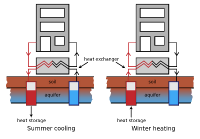
A common criticism of a total transition to renewable energy — wind, water, and solar power — is that the U.S. electrical grid cannot affordably store enough standby electricity to keep the system stable. Researchers propose an underground solution to that problem. The researchers use data from single-state calculations of the number of wind, water, and solar generators potentially needed in each state to show that these installations can theoretically result in a reliable, affordable national grid when the generators are combined with inexpensive storage and “demand response” — a program in which utilities give customers incentives to control times of peak demand.
-
-
Oklahoma Corporation Commission shuts down oil wells to reduce threat to Cushing oil hub

Cushing, Oklahoma, is the site of an immense oil tank farm, which presently stores fifty-four million barrels awaiting transfer to coastal refineries and plants. The tank farm is considered an integral and vital part of our national energy infrastructure. According to scientists, the integrity of the Cushing hub is now at risk because of fracking. Studies document that the recent disposal of millions of barrels of water into disposal wells, including those adjacent to the Cushing hub, have caused the rapid rise of earthquakes in Oklahoma. Oklahoma earthquakes have thus become a very real national security issue. Until federal expertise and support reaches Oklahoma, a potential human-made catastrophe could conceivably also become a national security disaster.
-
-
Pre-drilling computer analysis could limit fracking-induced earthquakes
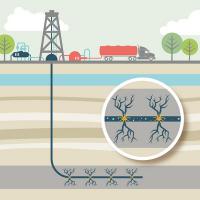
Hydraulic fracturing, also known as “fracking,” is used to break the subsurface rock mass into pieces and is done by injecting high-pressure fluid. While this gives the fluid or gas more paths to reach production wells, it also leads to several environmental problems, one of which is the unwanted shaking of the ground structures caused by the movement of large faults. Using computer analysis prior to drilling could limit seismic events as a result of hydraulic fracturing.
-
-
Will the Supreme Court kill the smart grid?
On 30 April, Tesla’s Elon Musk took the stage in California to introduce the company’s Powerwall battery energy storage system, which he hopes will revolutionize the dormant market for household and utility-scale batteries. A few days later, the Supreme Court announced that it would hear a case during its fall term that could very well determine whether Tesla’s technology gamble succeeds or fails. At issue is an obscure federal policy known in the dry language of the electricity business as “Order 745,” which a lower court vacated last year. Order 745 allowed electricity customers to be paid for reducing electricity usage from the grid — a practice known as “demand response.” It also stipulated that demand response customers would be paid the market price for not using the grid — like the power industry’s version of paying farmers not to grow corn. This case, ultimately, is far more significant than getting paid for not using electricity. It’s about who gets to set the rules of the road for emerging technology in the electricity sector — the states or the federal government — and whether the United States will be able to modernize its energy policy the same way that it would like to modernize its power grid.
-
-
Improve cybersecurity in energy delivery
Cyber networks support many important functions within energy delivery systems, from sending data between a smart meter and utility to controlling oil or gas flow in a pipeline. However, they are vulnerable to disturbances. According to the ICS-CERT Monitor, a publication of the U.S. Department of Homeland Security, a third of the 245 reported cyber incidents in industrial control systems that happened in 2014 occurred in the energy sector. The U.S. Department of Energy (DoE) initiative awards $28.1million to a consortium of eleven universities and research organizations, with the goal of improving computer/communication networks for energy delivery systems like power grids and pipelines.
-
-
Cost-effective, non-polluting enhanced geothermal systems
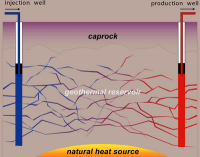
Tapping the natural heat of the earth may be more cost-effective and clean thanks to a research into a new area of geothermal energy, called enhanced geothermal systems. These systems are designed to enable power production in areas where conventional geothermal techniques do not work. Unlike typical geothermal systems, which rely on porous rock, enhanced geothermal systems have much greater potential to tap the energy of geothermal hot spots in areas of otherwise impermeable bedrock. The potential could be especially high in the western United States, including New Mexico.
-
-
Price of solar energy in U.S. has fallen to 5¢/kWh on average
Solar energy pricing is at an all-time low, according to a new report. Driven by lower installed costs, improved project performance, and a race to build projects ahead of a reduction in a key federal incentive, utility-scale solar project developers have been negotiating power sales agreements with utilities at prices averaging just 5¢/kWh. These prices reflect receipt of the 30 percent federal investment tax credit, which is scheduled to decline to 10 percent after 2016, and would be higher if not for that incentive. By comparison, average wholesale electricity prices across the United States ranged from 3 to 6 cents/kWh in 2014, depending on the region.
-
-
U.S. has fallen behind on offshore wind power
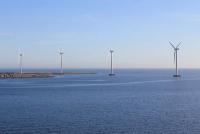
Experts say that the United States has fallen behind in offshore wind power. Their research shows that while offshore wind turbines have been successfully deployed in Europe since 1991, the United States is further from commercial-scale offshore wind deployment today than it was in 2005. “As we celebrate the 10-year anniversary of the U.S. Energy Policy Act of 2005, it is disheartening to see that while land-based wind and solar have reached new heights, U.S. offshore wind has remained a missed opportunity,” says one of the experts.
-
-
U.S. fracking uses less than 1 percent of total industrial water use nationwide
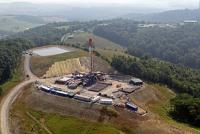
Energy companies used nearly 250 billion gallons of water to extract unconventional shale gas and oil from hydraulically fractured wells in the United States between 2005 and 2014, a new study finds. During the same period, the fracked wells generated about 210 billion gallons of wastewater. Large though those numbers seem, the study calculates that the water used in fracking makes up less than 1 percent of total industrial water use nationwide.
-
-
Small-scale nuclear fusion may be a new energy source
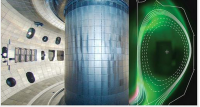
Nuclear fusion is a process whereby atomic nuclei melt together and release energy. Because of the low binding energy of the tiny atomic nuclei, energy can be released by combining two small nuclei with a heavier one. Fusion energy may soon be used in small-scale power stations. This means producing environmentally friendly heating and electricity at a low cost from fuel found in water. Both heating generators and generators for electricity could be developed within a few years, according to researchers.
-
-
Cost of coal greater than it seems
The cost of coal use is greater than it seems and policies geared toward subsidizing its use must be reformed quickly, before countries invest in coal-fired plants, a new study says. Governments around the world heavily subsidize fossil fuels, and in 2013 pretax subsidies amounted to about $550 billion worldwide. These substantial subsidies not only drain funds that could be used for other purposes, such as sanitation and poverty reduction, but discourage investments in low-carbon alternatives.
-
-
Rather food versus fuel, think in terms of both food and fuel
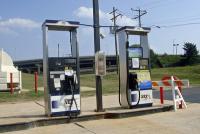
Whether you have taken a side or a backseat in the discussion, the “food versus fuel” debate affects us all. Some say growing more biofuel crops today will decrease greenhouse gas emissions, but will make it harder to produce food tomorrow, which has prevented the United States from maximizing the potential of environmentally beneficial biofuels. Scientists argue that farmers can sustainably, and affordably, meet humanity’s growing demand for food and fuel.
-
-
Predicting how much energy waves will be bringing
Intermittency is one of the problems affecting renewable energies, including marine energy: sometimes there is a lot; other times itis in short supply. To properly manage sea energy and incorporate it into the mains, it is helpful to know when the waves are expected to be bringing sufficient power. Researchers have developed various models for predicting the amount of wave energy for the Bay of Biscay, by using a technique called random forests.
-
-
Radioactive contaminants found in coal ash from all three major U.S. coal-producing basins

A new study has revealed the presence of radioactive contaminants in coal ash from all three major U.S. coal-producing basins. The study found that levels of radioactivity in the ash were up to five times higher than in normal soil, and up to ten times higher than in the parent coal itself because of the way combustion concentrates radioactivity. The finding raises concerns about the environmental and human health risks posed by coal ash, which is currently unregulated and is stored in coal-fired power plants’ holding ponds and landfills nationwide.
-
-
DOE grant to make Sacramento, Calif. grid more resilient in emergencies

The Department of Energy (DOE) has awarded the Sacramento Municipal Utility District (SMUD) $600,000 to install smart-grid technologies which will make the SMUD grid more adaptable to adversity. The Grid Resilience Grant helps fund half of SMUD’s $1.2 million Resilient Grid Initiative which is designed to make SMUD’s distribution system more adaptable to major disasters and reduce the effects of climate change through the installation and operation of high-voltage (69 kilovolt) switches and the implementation and operation of voltage optimization measures. These measures will increase the carrying capacity of the system during major natural disasters and other emergencies.
-
More headlines
The long view
Trump Is Fast-Tracking New Coal Mines — Even When They Don’t Make Economic Sense
In Appalachian Tennessee, mines shut down and couldn’t pay their debts. Now a new one is opening under the guise of an “energy emergency.”
Smaller Nuclear Reactors Spark Renewed Interest in a Once-Shunned Energy Source
In the past two years, half the states have taken action to promote nuclear power, from creating nuclear task forces to integrating nuclear into long-term energy plans.
